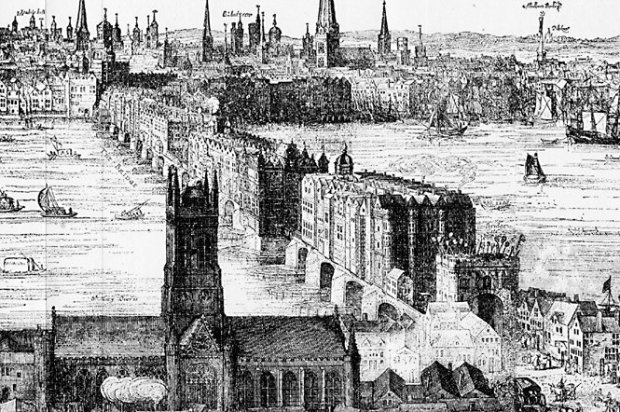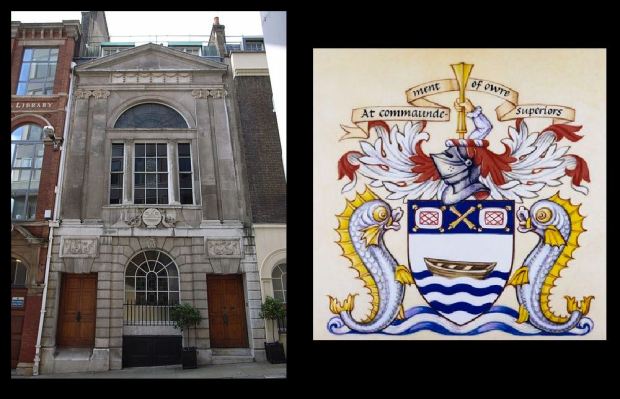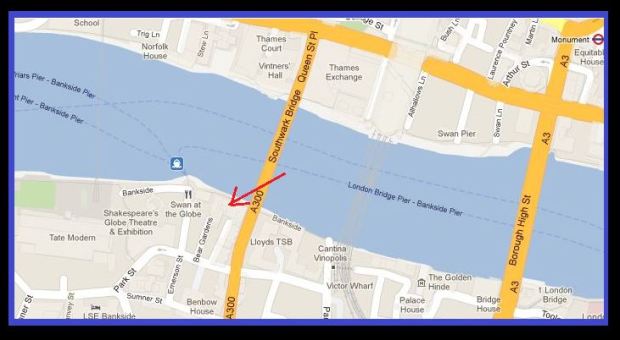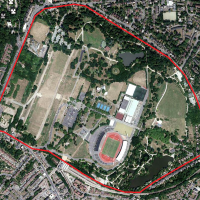Tucked away between Southwark Bridge and Shakespeare’s Globe Theatre there sits this rather cramped looking bench:

The Ferryman’s Seat
Known as the ‘Ferryman’s Seat’, this cramped perch is essentially London’s earliest remaining example of what we’d now call a taxi rank…
*
Although the exact age of the seat is unknown, it’s most likely to have been established around the 12th or 13th century; a period when London was beginning to spread west (thanks to the consecration of Westminster Abbey in 1065) and south, where Southwark was gaining a reputation as a seedy but popular entertainment district (if you’d like to find out more about Southwark’s depravity during this era, please take a look at my previous post; Bishops, Bones and Birds…)
Despite this expansion, the city had just one river crossing- London Bridge, an inconvenient situation which remained until 1750 when Westminster Bridge was opened.
This bothersome set-up resulted in London Bridge becoming a notorious bottleneck, jammed with pedestrians, waggons and livestock, the sheer volume of which often resulted in crossing times of up to an hour.

View of London Bridge in 1616. The large building in the foreground is Southwark Cathedral
As well as the excruciating journey times, there was also the multitude of mud, filth and manure to contend with… not to mention the contents of chamber pots which were lobbed out of the ramshackle houses lining the pontoon.
Taking all of this into account, it’s easy to see why traversing London Bridge was a rather unpopular task!
Those with a few pennies in their pocket therefore would often turn to the Thames Watermen…

A Thames Waterman (sadly, I couldn’t afford a proper artist, so this is my own impression!)
The Watermen were the ancestors of London’s modern-day cabbies; ferrying fares back and forth across the Thames in small boats known as ‘wherries’.

A ‘wherry’ from the Victorian era (photo: bargemen.com)
Their convenient nature was summed up in 1667 by the diarist, Samuel Pepys who described a typical commute; “by coach to the Temple, and then for speed by water thence to Whitehall.”

“I had that Samuel Pepys in the back of my wherry once!”
Rather than acquiring a knowledge of streets and roads, these early service-providers were noted for their knowledge of the water, having a sound understanding of the dangerous currents and extreme tides which characterize the Thames.
*
The worn down bench which survives today would have been used by Watermen awaiting a fare on the shores of Southwark. Punters seeking passage across the Thames would approach the Watermen and shout for “oars!” just as people today call out “taxi!”

Close up of the Ferryman’s seat
For many years, the Watermen had a reputation for being unscrupulous, often overcharging way over the expected price. In 1293 for example, it was recorded that one certain rouge, “did take from passengers unjust fares against their will.”
In 1514, Parliament stepped in to set and regulate fares- something which continues to this day with modern cabs.
Also like today, there were strict laws governing how many passengers each vehicle was permitted to hold (wherries being limited to three people at a time).
A further parallel with the present is that just like the cabbies of today, Watermen were required to wear a badge bearing their personal licence number.

A Waterman’s badge. Today, London cabbies wear a green, metal badge with their number printed across the middle in the exact same manner (photo: National Maritime Museum)
A few decades later, in 1555, the Worshipful Company of Watermen and Lightermen was established to look after the interests of those who relied upon the Thames for a living (Lightermen worked in a similar role, although they conveyed goods rather than the public).
The company are still in existence today, their grand hall being located on St Mary at Hill.

Watermen’s Hall and crest (photos: Wikipedia & National Maritime Museum)
*
Despite carrying out a job comparable to Venetian gondoliers, the Thames Water Men were far from graceful. The London Encyclopaedia describes them as being “a sturdy, rough breed with their own jargon and as quick with raillery and repartee as with their fists.”
Picking up from areas such as the lawless Southwark, with its taverns, brothels and bear-baiting pits (the alleyway upon which the Ferryman’s seat is located is actually called ‘Bear Gardens’ as a reference to this vicious spectacle), it’s no wonder that the Water Men had to toughen up.
Nowadays of course, London taxis have a Perspex screen to shield us cabbies from the rabble!
If you wish to see the historic seat for yourself, it can be found around the corner from Bankside’s, Real Greek restaurant. A map of its precise location is show below:













Darn, I wish I’d seen that. We were staying by Borough Tube and walked around there every day. We did visit the Clink though, and learned all about the seedier aspects of Southwark! Great post.
Ahh, sorry to hear that! It certainly is one of London’s more discreet sites of historical interest. Hope you get to see it next time you’re in town 🙂
Fascinating blog – something I wasn’t familiar with – thanks for posting it.
You’re most welcome; many thanks for the kind comment.
As a London cabbie I can’t help loving londons history.
Although the Perspex screen dividing the driver from the punter I like to call it a privacy screen, so the punters in the rear can have a conversation privately, although I keep the intercome on high.